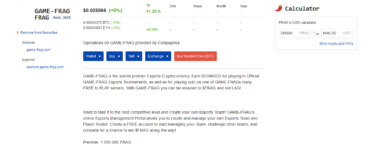With a plethora of tools and platforms at marketers’ disposal, it’s crucial to pinpoint the metrics that really reflect the effectiveness of a campaign. While the aims of each campaign may fluctuate, sure key metrics stand out as common indicators of success. Understanding and analyzing these metrics not only gauge the performance of a campaign but additionally provide valuable insights for refining future strategies.
1. Conversion Rate: On the heart of each digital marketing campaign lies the target of changing leads into customers. The conversion rate, whether it’s measured as sales, sign-ups, or downloads, is a fundamental metric indicating how effectively a campaign is driving desired actions from its target audience. Tracking conversion rates permits marketers to establish which strategies or channels are yielding the highest returns and allocate resources accordingly.
2. Return on Investment (ROI): ROI is the ultimate litmus test for the profitability of a digital marketing campaign. By comparing the campaign’s prices to the generated income or worth, marketers can assess its overall efficiency and profitability. Calculating ROI not only helps justify marketing expenditures but also enables informed determination-making on resource allocation for future campaigns.
3. Click-By means of Rate (CTR): CTR measures the proportion of people who clicked on a specific link or advertisement out of the total number of individuals who considered it. A high CTR signifies that the campaign’s messaging and call-to-action resonate well with the viewers, driving interactment and site visitors to the desired destination. Monitoring CTR across varied channels and ad creatives provides insights into audience preferences and helps optimize campaign elements for better performance.
4. Value Per Acquisition (CPA): CPA evaluates the cost incurred for buying a new customer or lead through a digital marketing campaign. By dividing the total campaign value by the number of acquisitions, marketers can ascertain the efficiency of their acquisition efforts. Lowering the CPA while maintaining or rising conversion rates is indicative of improved campaign effectiveness and value-effectiveness.
5. Engagement Metrics: Beyond conversions and acquisitions, have interactionment metrics reminiscent of likes, shares, comments, and time spent on site provide valuable indicators of viewers interaction and interest. These metrics provide qualitative insights into the effectiveness of content and messaging, serving to marketers tailor their strategies to higher resonate with their target audience.
6. Buyer Lifetime Worth (CLV): CLV estimates the total revenue a buyer is expected to generate over their total relationship with a business. While not a direct measure of campaign success, tracking CLV permits marketers to evaluate the long-term impact of their acquisition and retention efforts. By optimizing campaigns to draw high CLV customers, companies can maximize their return on investment and foster sustainable growth.
7. Website Traffic and Sources: Analyzing website visitors metrics, together with total visits, distinctive visitors, and referral sources, provides valuable insights into the effectiveness of digital marketing channels and campaigns. By understanding which channels drive the most site visitors and conversions, marketers can allocate resources strategically and optimize their on-line presence for max impact.
8. Social Media Metrics: For campaigns leveraging social media platforms, metrics such as follower growth, interactment rate, and social shares are instrumental in assessing performance. These metrics not only gauge the attain and impact of social media efforts but also provide insights into audience preferences and conduct, informing content material strategies and community management tactics.
In conclusion, measuring the success of digital marketing campaigns requires a complete approach that encompasses each quantitative and qualitative metrics. By tracking key indicators resembling conversion rate, ROI, CTR, CPA, interactment metrics, CLV, website site visitors, and social media performance, marketers can acquire actionable insights into campaign effectiveness and make data-pushed selections to optimize future strategies. Ultimately, a radical understanding of those metrics empowers businesses to refine their digital marketing efforts, maximize their return on investment, and achieve sustainable growth in an more and more competitive landscape.
Should you loved this article and you wish to receive more details about Latin Group Chicago assure visit our own web site.

 by orvilleifb
by orvilleifb





